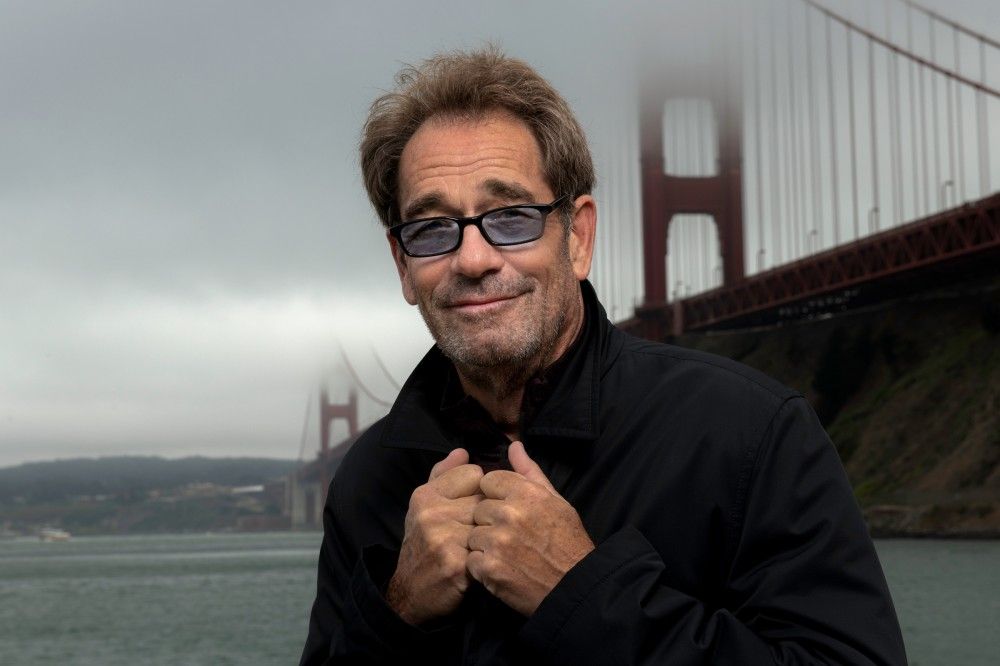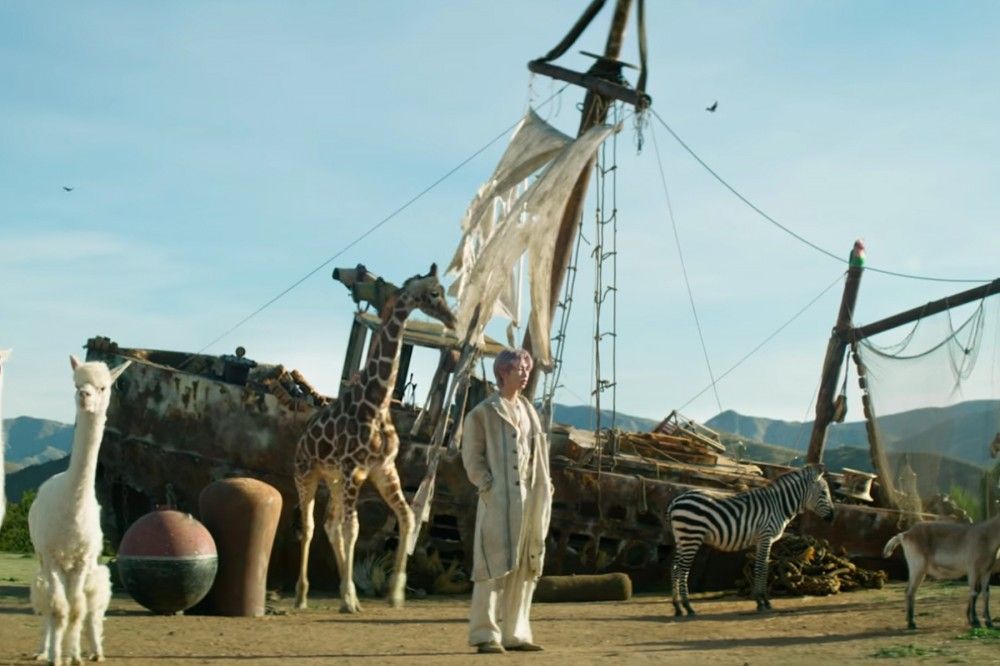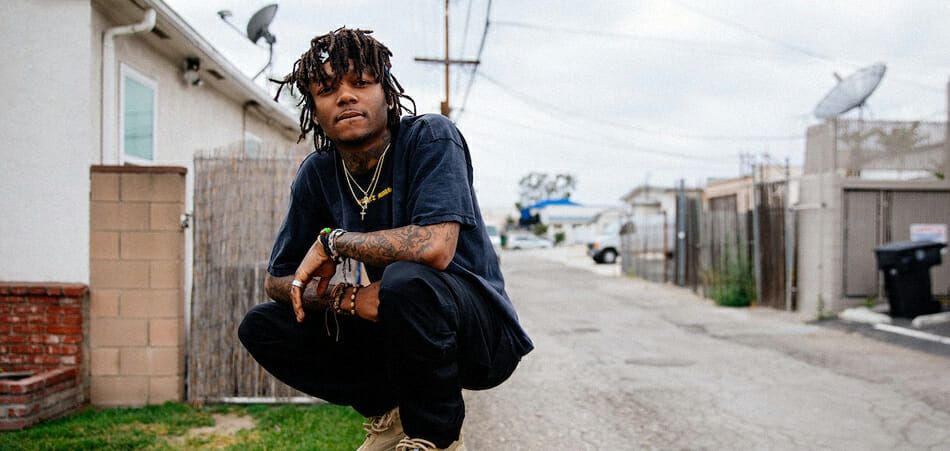
Huey Lewis May Never Perform Again. But He Refuses to Give Up
Huey Lewis can pinpoint the exact moment his entire world fell apart. It was January 2018 and he was in Dallas to play a corporate gig with his longtime band the News. Opening act Pat Green was entertaining the audience and Lewis was “taking the Elvis route” to the stage through the kitchen.
“I heard this huge noise,” he says. “It sounded like warfare was going on in the other room. I yelled, ‘What is that?’ They said, ‘It’s just Pat, the opening act.’ I put in my in-ear monitors] in and couldn’t hear anything.”
He hoped things would improve once he got onto the stage, but when the band kicked into the opening song, the sound only got worse. “I thought the bass amp had blown a speaker,” he says. “I just heard this horrible noise and I couldn’t find pitch or even hear myself. It was an absolute nightmare. The worst thing. Just horrible.”
The last time anything like this happened was back in 1987, right at the apex of Lewis’ fame, when songs like “Doing It All for My Baby” and “Hip to Be Square” were all over Top 40 radio. One day, out of nowhere, the hearing in his right ear completely vanished. “I felt like I had been in a swimming pool and my ear was full,” he says. “I couldn’t shake it out or pop my ears. I went to all kinds of doctors and an EMT finally said to me, ‘Get used to it.’ I said, ‘Get used to it? I’m a musician!’”
The doctor explained to him that the hearing was unlikely to return but that great artists like Brian Wilson got by just fine with hearing in only one ear, since the body has a remarkable way of adjusting. Lewis was ultimately diagnosed with Meniere’s disease.
“It’s a syndrome based on symptoms,” the singer says. “If you have fullness in your ears, vertigo, and tinnitus, they call it Meniere’s, but they don’t know what it is.”
As predicted, Lewis quickly adjusted to life with one ear and went about his life and career until that horrible night in Dallas when his left ear dropped out too. He went to the House Ear Institute, the Stanford Ear Institute, and the Mayo Clinic to meet with the most renowned hearing specialists in the world. When they were unable to help, he visited a chiropractor and an acupuncturist, and even instituted an all-organic, low-fat, caffeine-free, essential-oils diet.
Nothing worked, and he was forced to cancel all his future tour dates. Singing had been at the center of Lewis’ life since he was a teenager and despair quickly set in. “I was suicidal,” he says. “There was literally a roaring tinnitus in my head. I just laid in bed. There was nothing I could do. I’d just lay in bed and contemplate my demise.”
With the help of his children and close friends, he slowly pulled himself out of his misery.
“It turns out you can get used to almost anything,” he says. “I told myself things like, ‘At least I don’t have pancreatic cancer …’”
He also realized that his condition was more complicated than he originally thought. Some days he was essentially deaf, but other days he heard well enough to engage in conversations. He created a scale of one to 10 to explain it to others. “Ten is what it was before this happened,” he says. “I’m at a five now right now, which means I can hear speech fine with hearing aids in. Under a three, I can’t even hear the phone ring.” (During the course of an hour-long conversation, Lewis hears me just fine and never asks me to repeat even a single question.)
But even on days where he’s a five and can engage in conversation, listening to music is a very different story. “Music is much harder to listen to than speech because even one note occurs in all frequencies with harmonics and overtones and undertones,” he says. “I call it distortion. When I hear a bass part that goes ‘bump, bump, bump,’ I just hear imitates the sound of loud, crunchy static]. I fight for pitch and I can’t find it. If I can’t find pitch, I can’t sing. It’s horrible.”
“I was suicidal. … I’d just lay in bed and contemplate my demise.”
The timing of all this is particularly cruel because when it happened, Lewis was hard at work on the first album of original songs since 2001’s Plan B. New music hadn’t been a priority for him in quite a while. His most recent Top 40 hit was 1991’s “It Hit Me Like a Hammer,” and he had more than enough classics to fill out a set list, but he still felt like it was time to try again.
“As a storyteller, you need new stories every now and then,” he says. “But we were doing 80 shows a year and we had lives, so it didn’t seem like there was time to make another record. Also, a real problem was the songs. We’re not a prolific bunch as it is, especially since we’ve written a bunch of stuff and its hard to write more. It’s harder now. I can’t have a song with ‘rock & roll’ in the title. I already did that!”
But slowly over the years, prior to his hearing loss, he recorded the seven songs for his upcoming LP Weather, in stores February 14th. “The label initially wanted to add more songs from earlier points in my career],” says Lewis. “I said to them, ‘Why poison the water? This is a body of work. Why contaminate it? Who cares about the number of songs? And if it’s just seven songs because I can’t sing anymore, that’s a better story! And Kanye’s record just has seven songs. Case closed!’”
Lead-off single “Her Love Is Killin’ Me” was written by Lewis and former News guitarist Chris Hayes about 25 years ago. “It just didn’t work for some reason,” he says. “We tired it onstage in all sorts of different arrangements and it never worked. Two years ago, rhythm guitarist and saxophonist] Johnny Colla] had an idea for a horn chart and we re-worked it and it happened. Sometimes it takes the simplest things to get a song right.”
Another song, “While We’re Young,” was written by News bassist John Pierce along with Colla and Lewis. The vocal was originally cut in Lewis’ San Diego condo and the song was pieced together by various members of the band over email. “We never sat in the studio to make that one,” says Lewis. “We assembled it. And some of the vocals on the finished version were cut in my living room on that first day.”
“One of the Boys” came about when producer Dave Cobb asked Lewis to write a song for a Willie Nelson project that never came to fruition. “Now I had this song for Willie,” says Lewis. “I imagined it as his story, but suddenly I realized it was actually my story. John McFee, who worked with me in my old band] Clover and is now in the Doobie Brothers, played pedal steel and we finished the tune.”
Lewis now finds himself in the unusual position of having a new record that he can’t tour to support. But he’s filming a documentary about his life (“We’re going to kick Linda Rondstadt’s ass!” he jokes) and trying to bring his musical The Heart of Rock & Roll to Broadway. It’s the fictional story of a struggling rock singer who gives up on his dreams of stardom to work in a cardboard-box factory, where he falls in love with his boss’ daughter. When his group gets an offer to open up for a huge band on tour, he has decide if it makes sense to leave his new life behind and give music one last chance. Every song, of course, is by Huey Lewis and the News.
The musical played to packed houses in San Diego last year, but bringing it to Broadway has proved to be challenging. “It’s an interesting game, Broadway,” Lewis says. “The theater owners own all the cards and you have to find the right one. It can’t be too big or too small. Union-wise, you need a certain number of musicians. It’s quite complicated, but we’re navigating all that and hopefully we’ll go to Broadway this year.”
Even with all these projects occupying his time, along with golf and spending time with his two kids, Lewis still yearns to sing onstage again one day. On days where he’s a five or higher, he sings into his computer just to keep his voice up. At two points in the past year, he had so many great days in a row that he booked a rehearsal space with his band just to see what would happen. The News flew in from all over the country, but both times his hearing dropped down below a two shortly before they could all get in the room together.
There have been brief moments of triumph, though. In October 2018, Lewis went to St. Andrews, Scotland, for a golf tournament, and he was having such a great hearing day that he went onstage with a band that was playing there and sang “Hip to Be Square.” “I was able to do it because it was as tiny place, not an arena, and the band was very quiet, he says. “It felt amazing though. I was so happy.”
In theory, Lewis could play a full set on a good hearing day under the right conditions, but the logistics make it hard to pull off. “I’d need to book the show a month in advance,” he says, “and I never know what I’ll be like in a couple days since it fluctuates so much.”
His former production manager now oversees the Buddy Holly hologram tour and they’ve joked about using the technology to get him back on the road. “They had to use a model to ape Buddy Holly,” he says with a laugh. “I’d be the perfect model for Huey Lewis! I could come on between tunes and do shtick. The crew loves the idea.”
That’s obviously out of the question, and Lewis also rejects any idea that involves using pre-recorded vocals as part of a live show. But whatever happens going forward, he’s refusing to give up hope that one day he’ll heal. “The inner ear is one of the things that medical science knows the least about,” he says. “It’s cased in bone and there’s no surgery. But I’m taking stem-cell stuff and trying everything. With my hearing always fluctuating, my body is doing something itself. What I have to do is stay healthy, exercise, and hope my body will slowly take care of itself.”
And if he never gets his hearing back and therefore never plays live again, Lewis says he’ll be OK.
“I have a great life,” he says. “I’m a lucky guy. No matter what happens, I’m a lucky guy. Sometimes I have to remind myself of that. But I am.”



